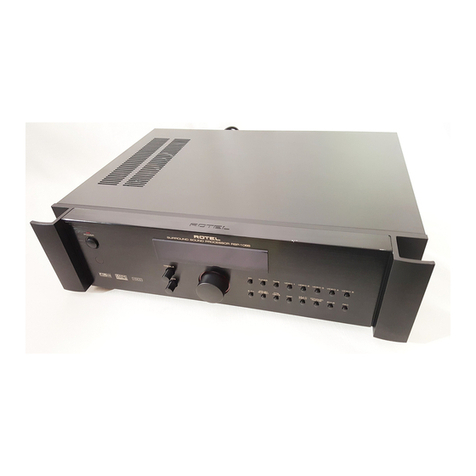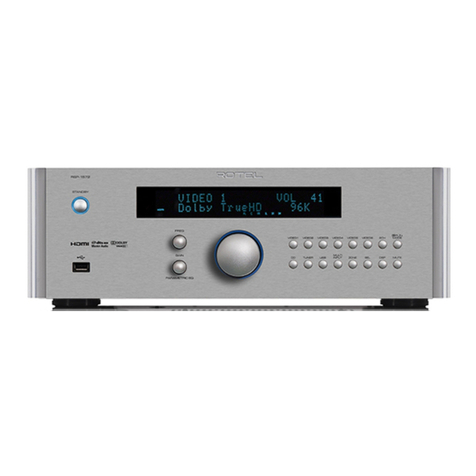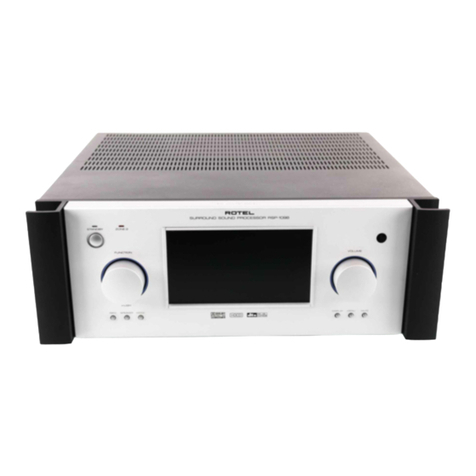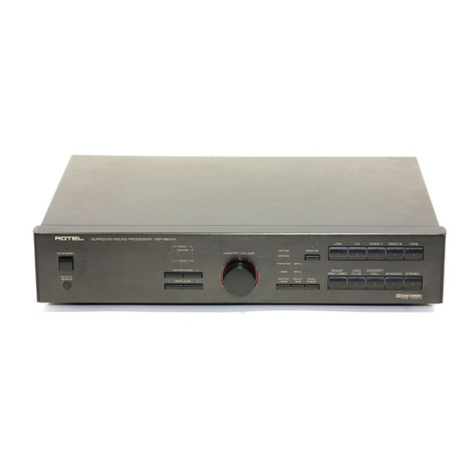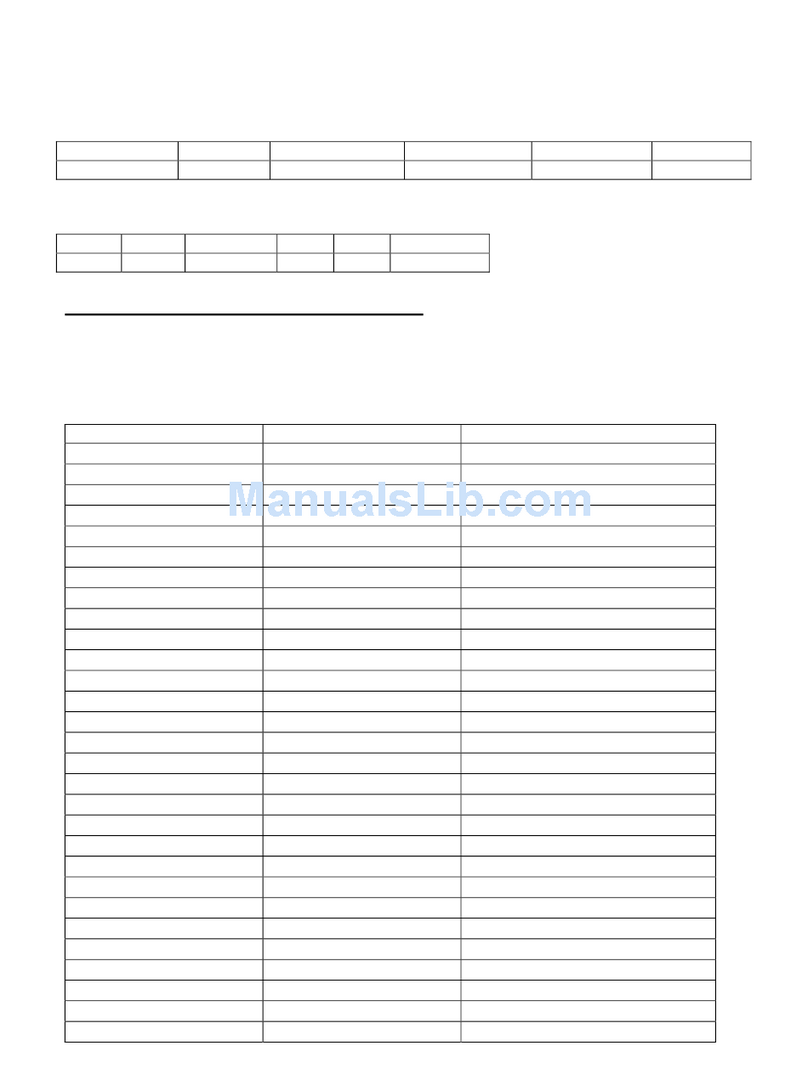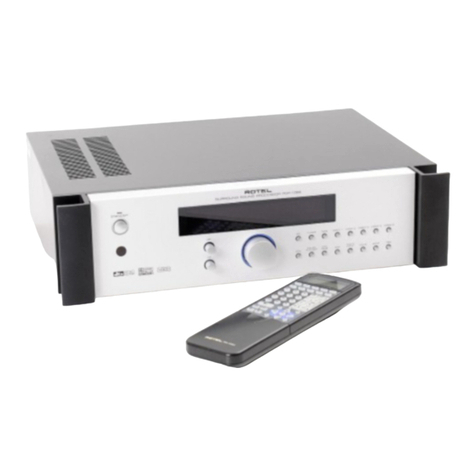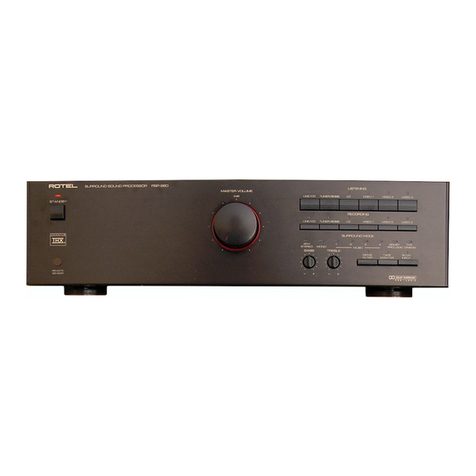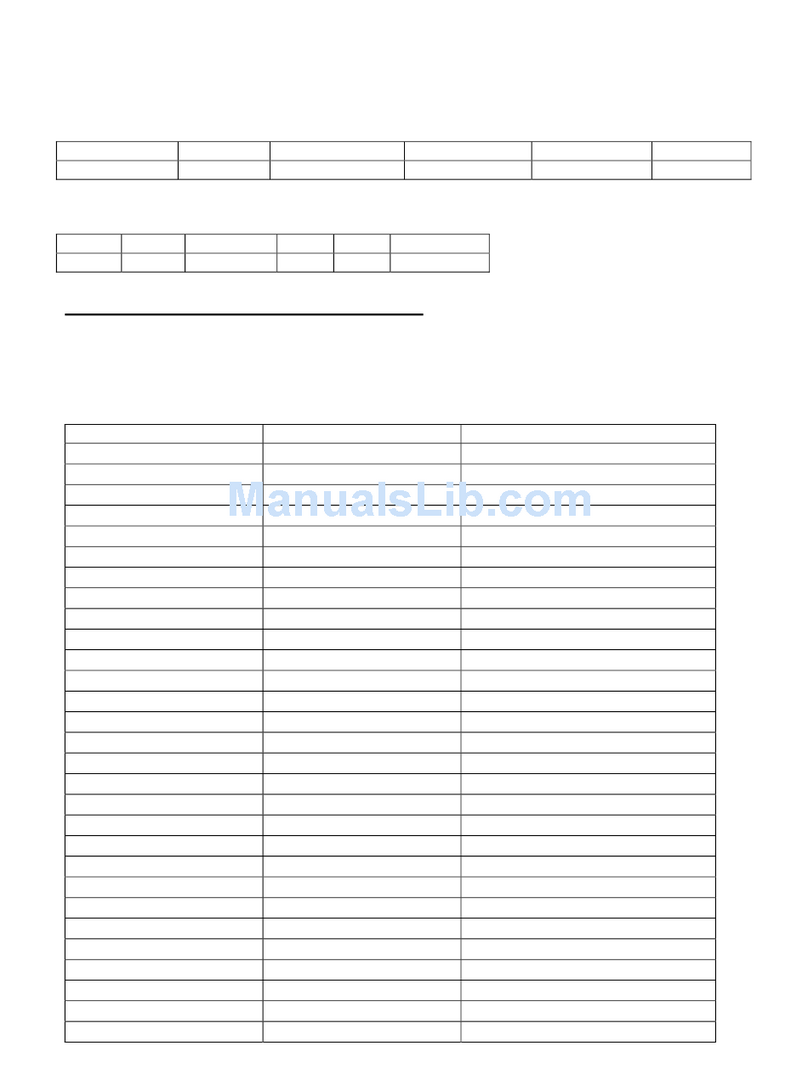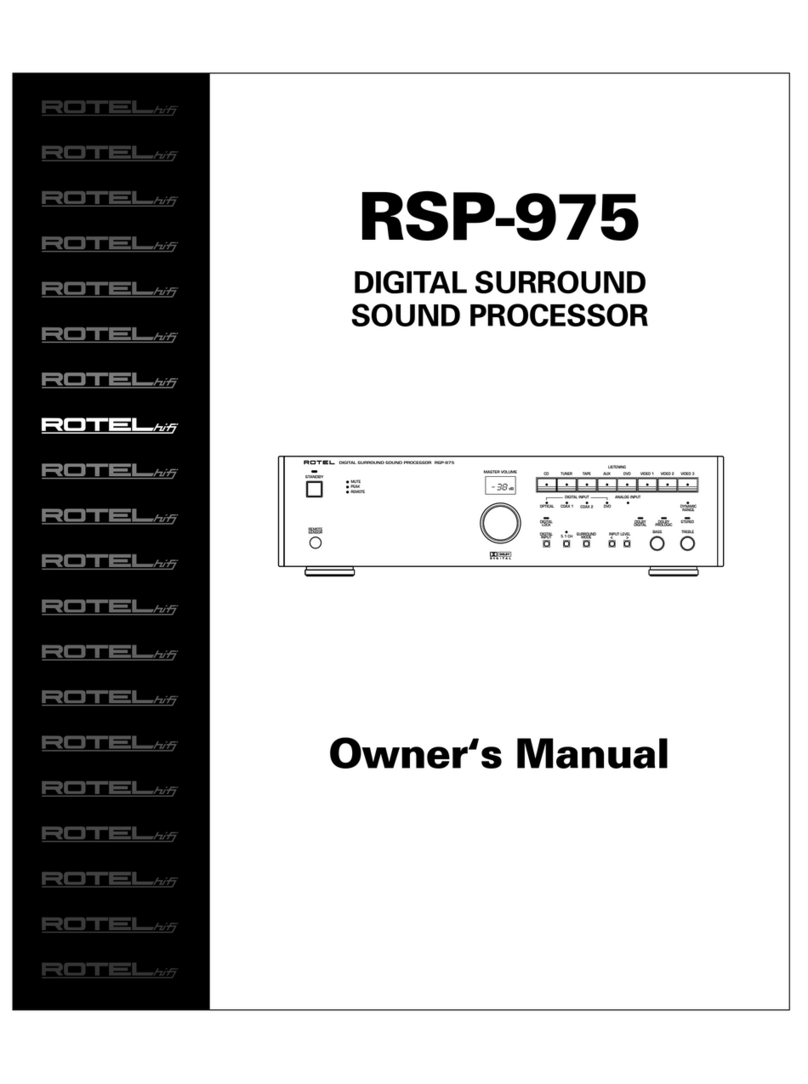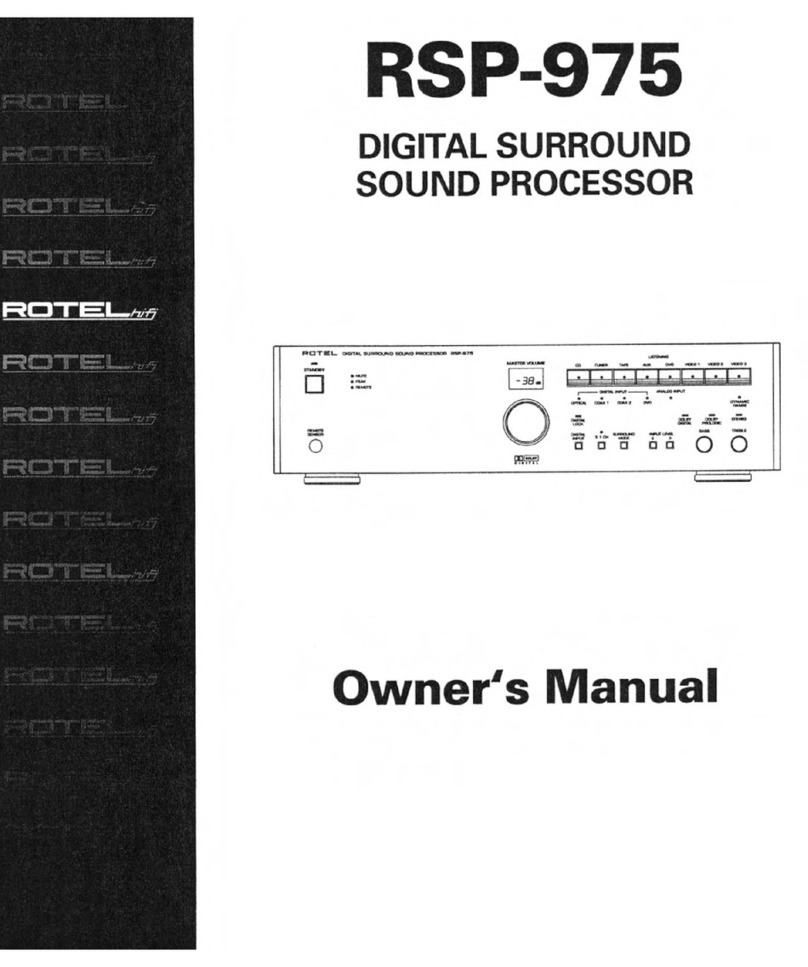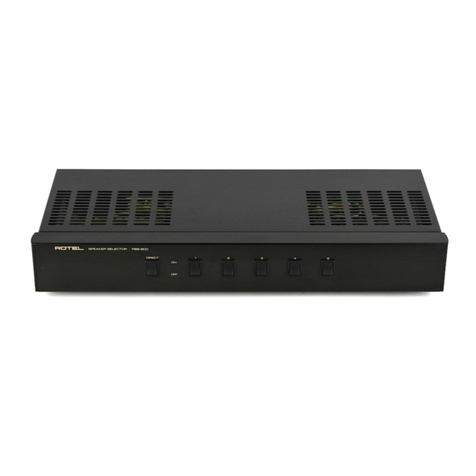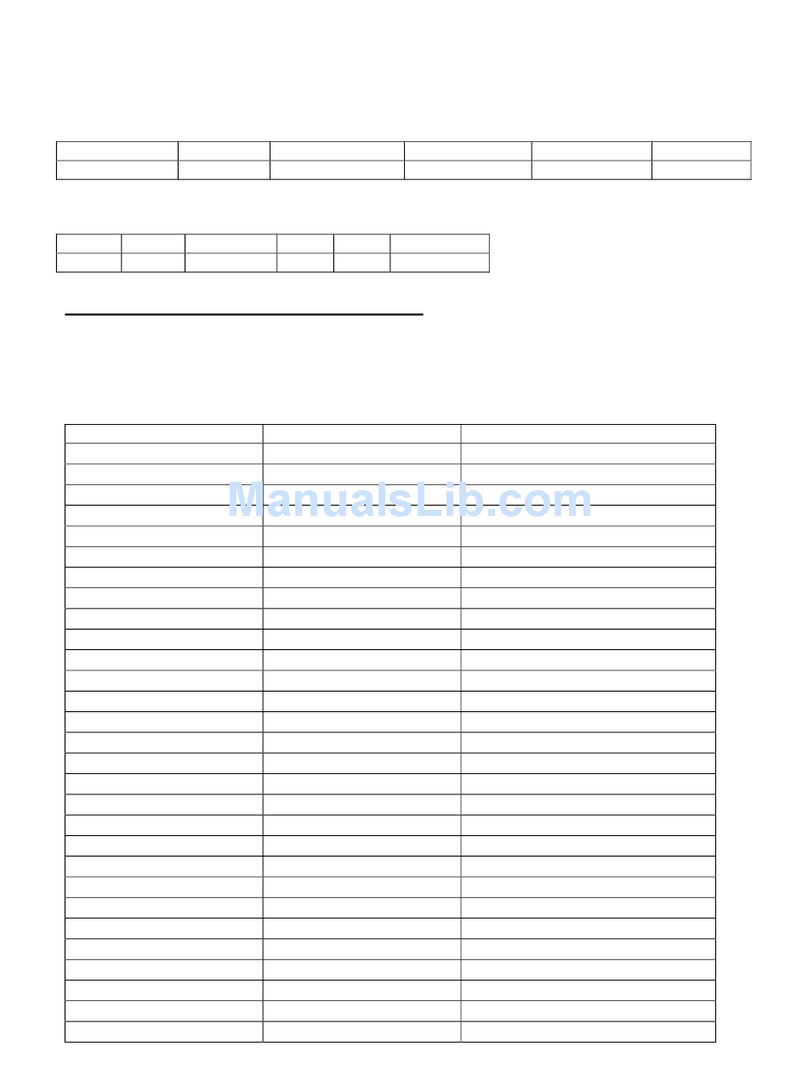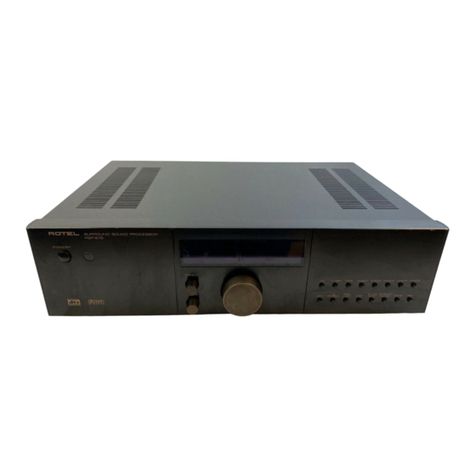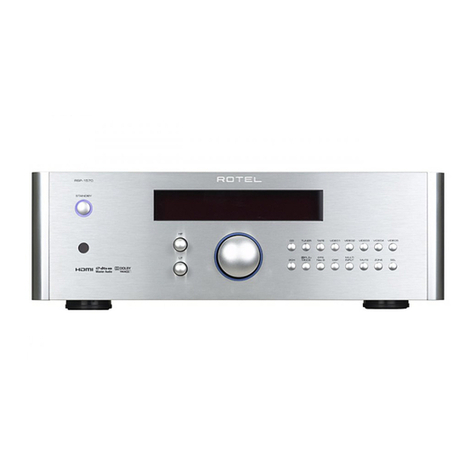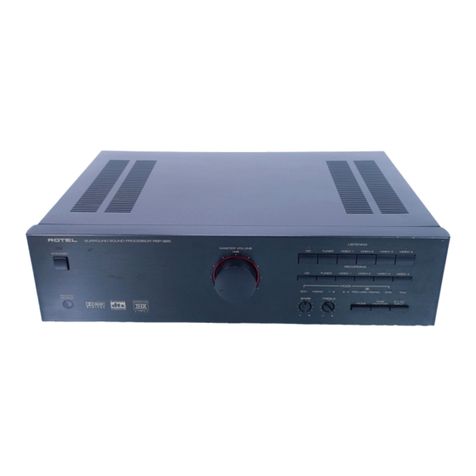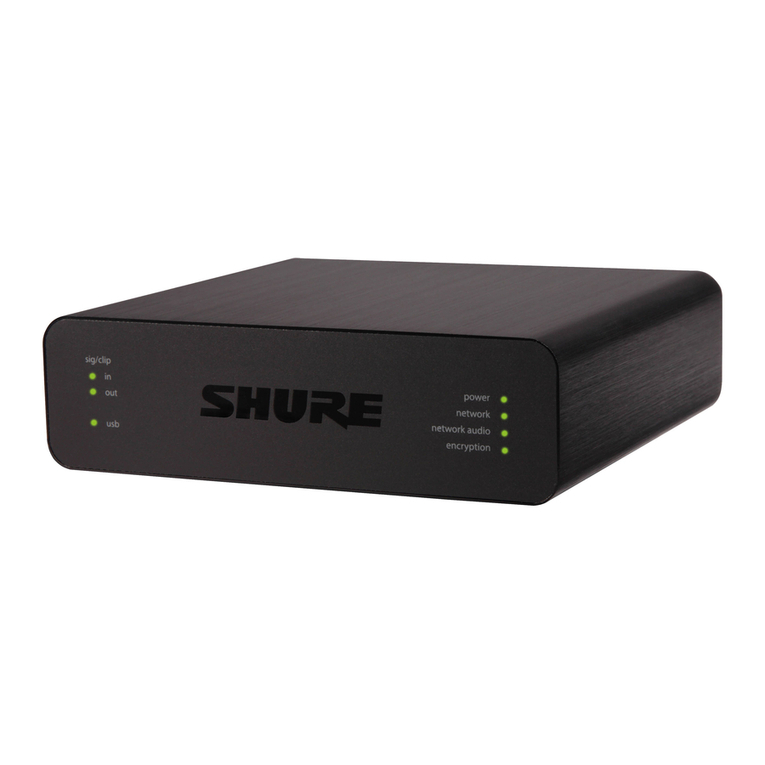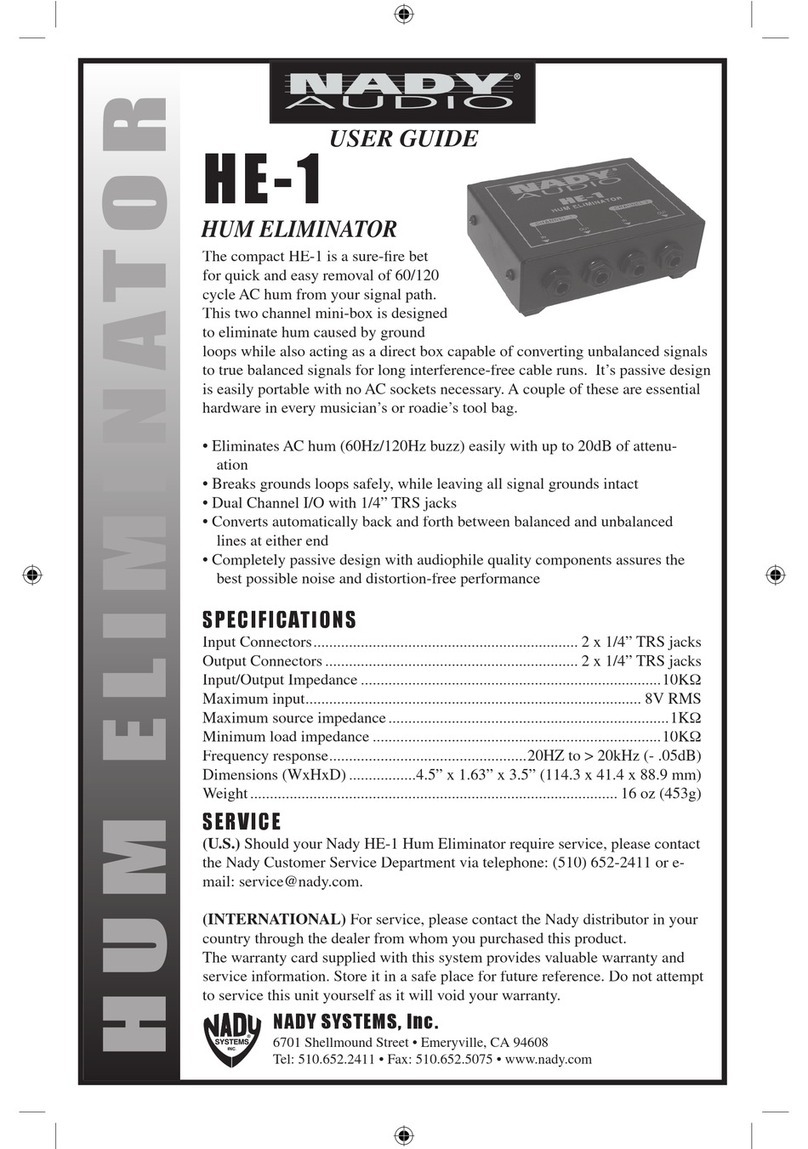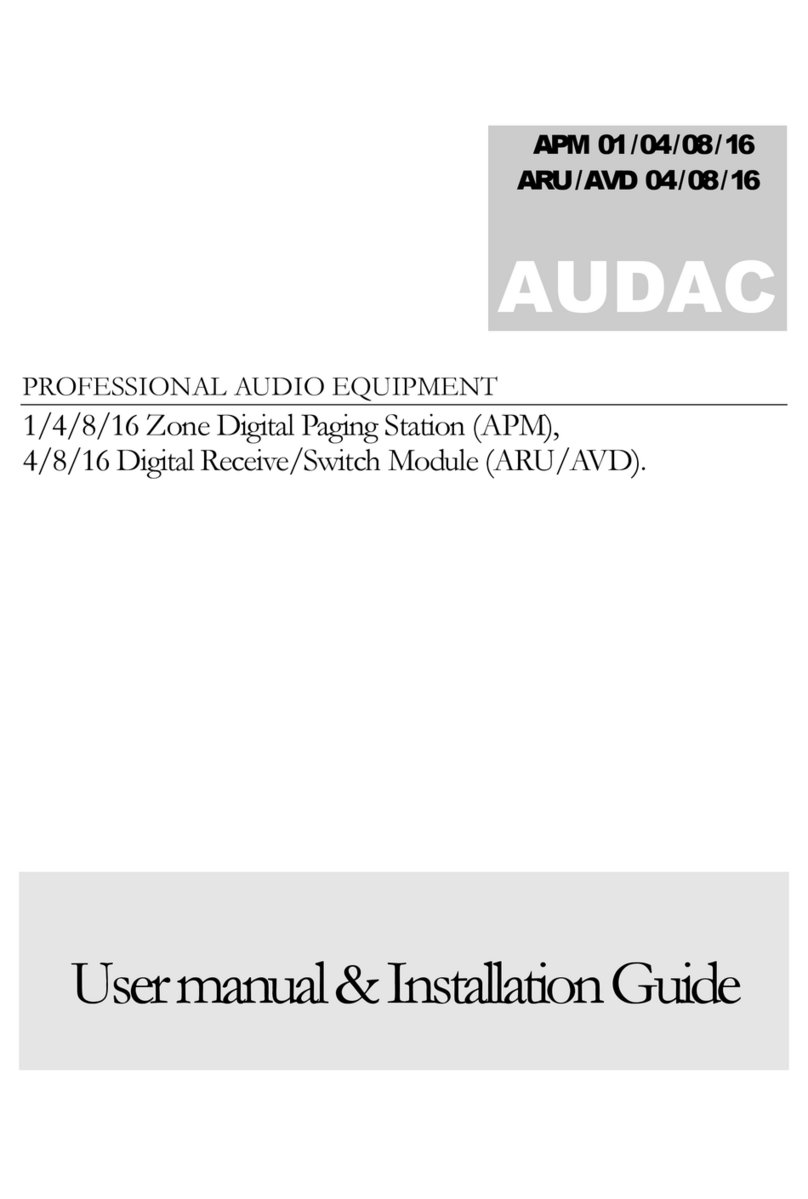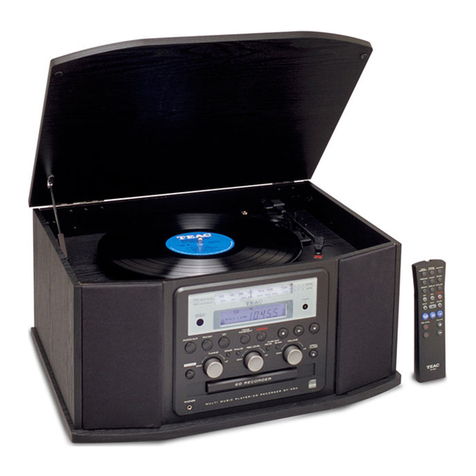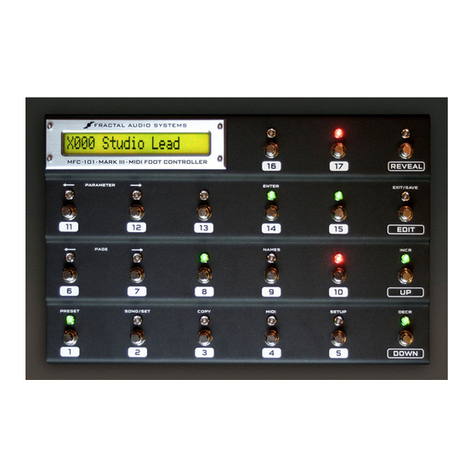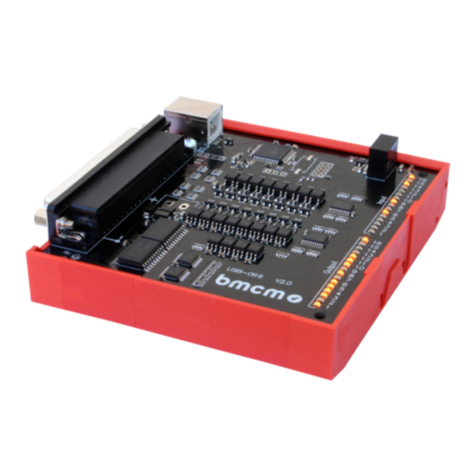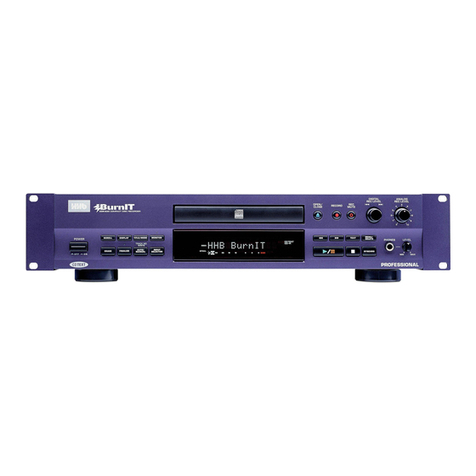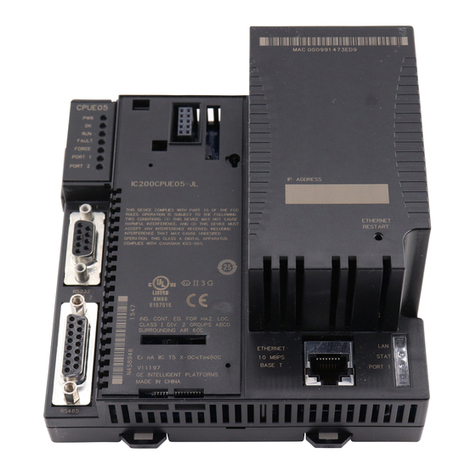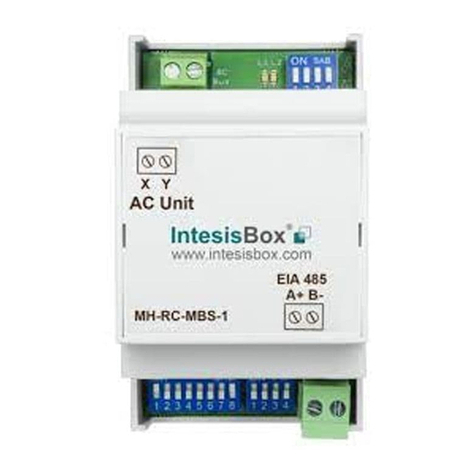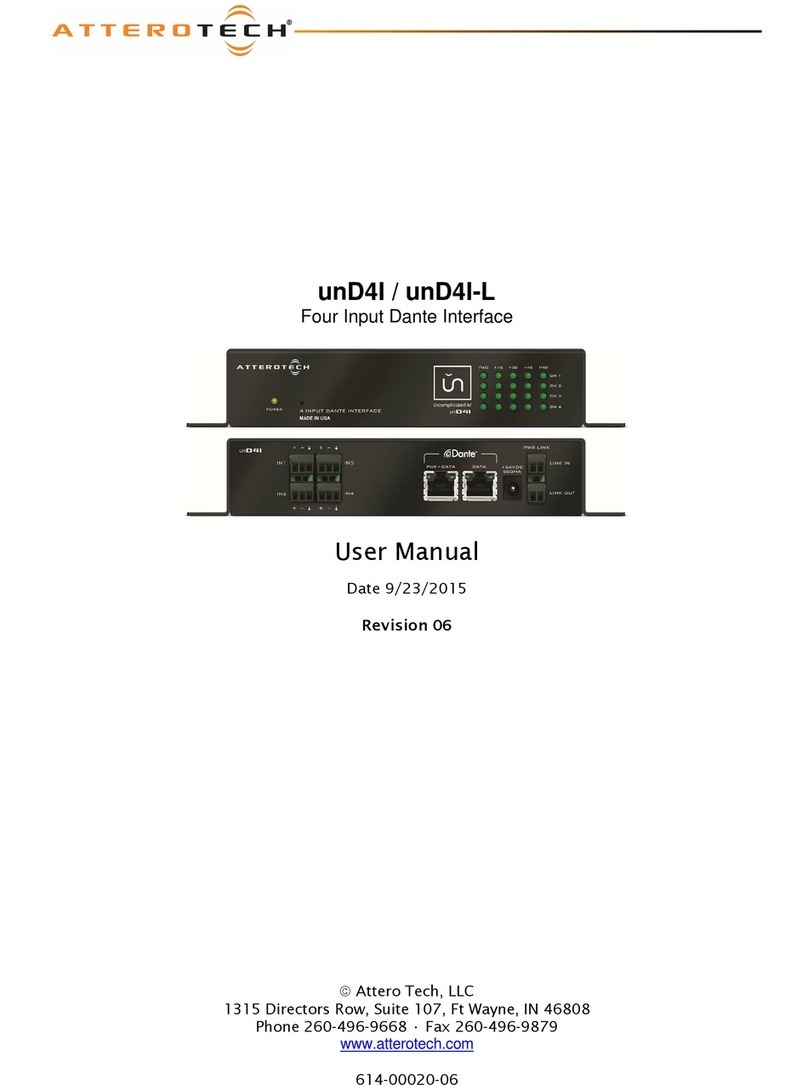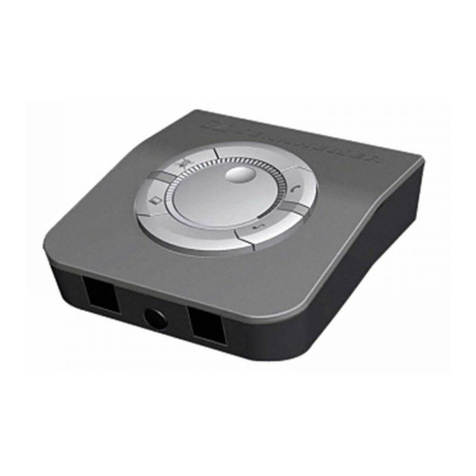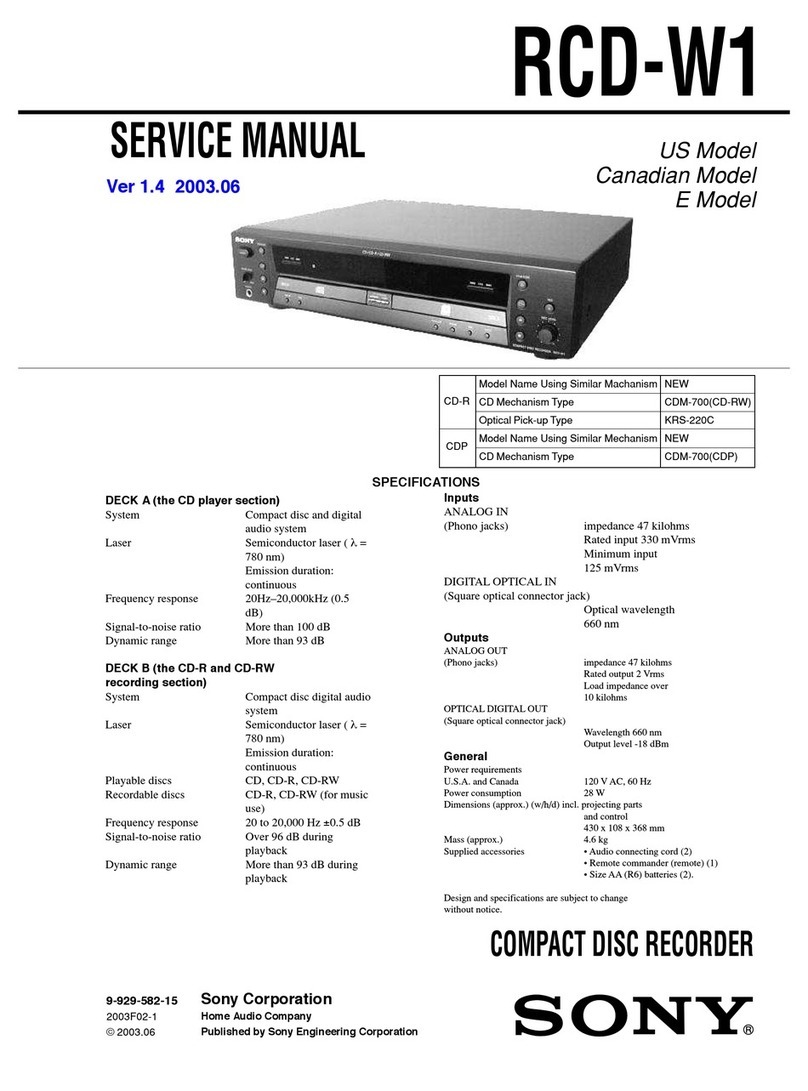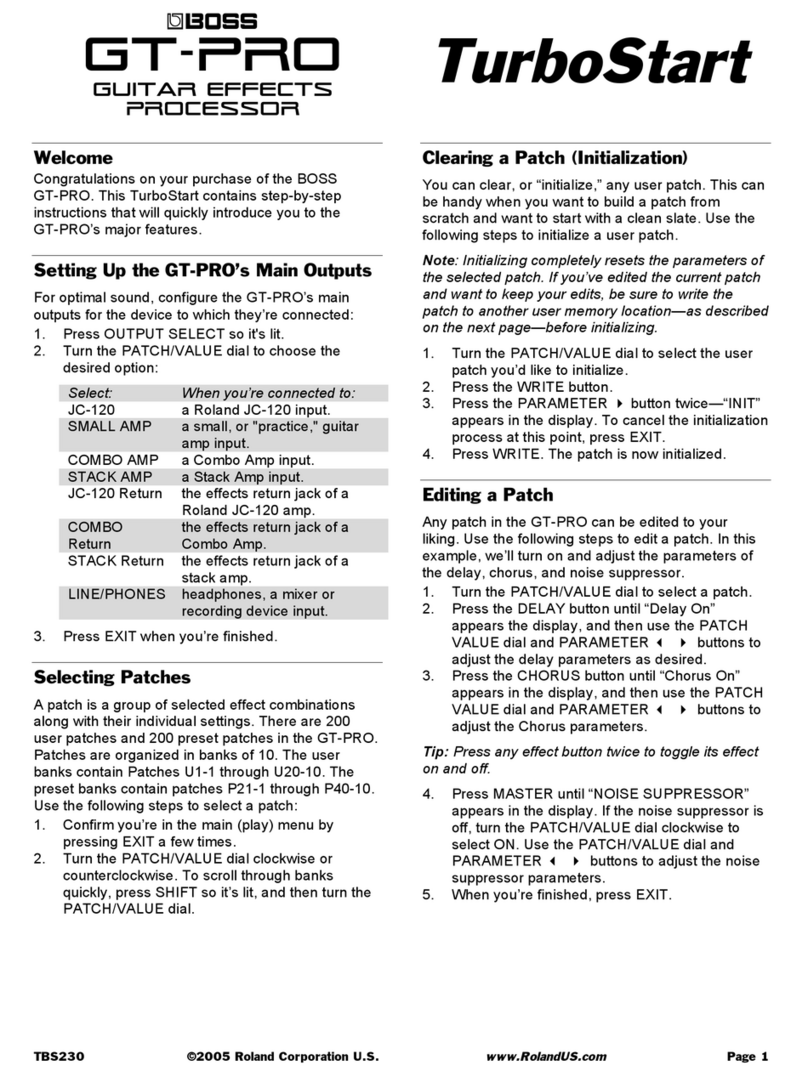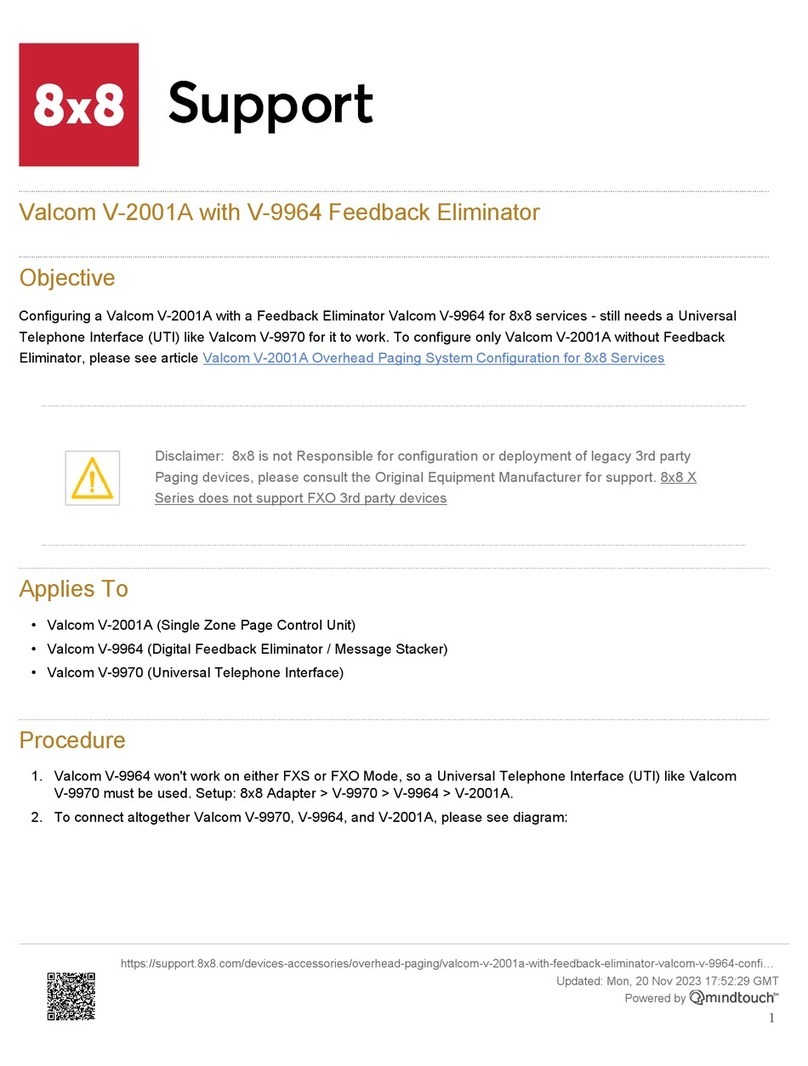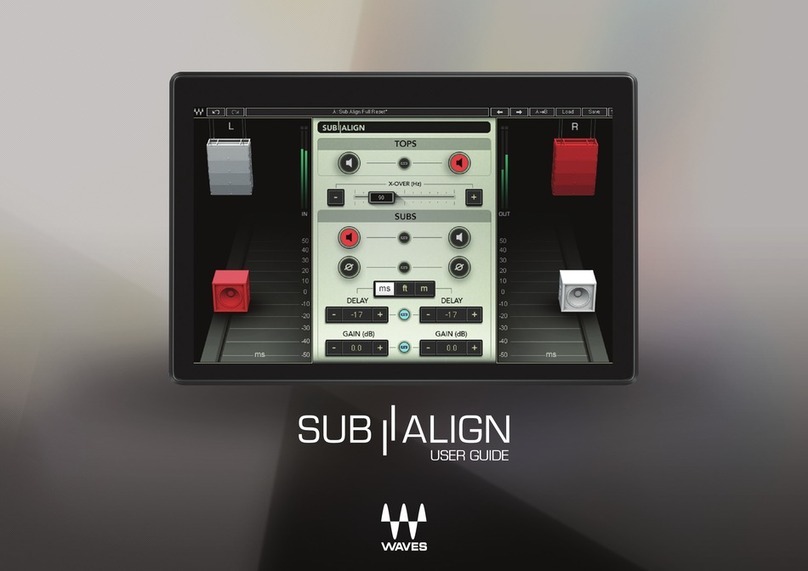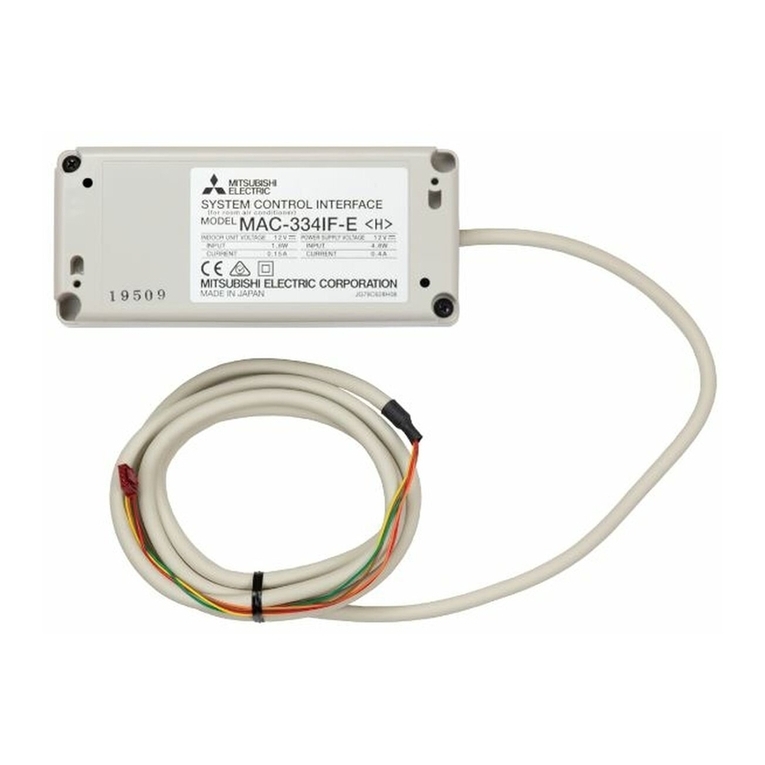
5
Instrucciones Importantes Relacionadas
con la Seguridad
ADVERTENCIA: No hay componentes manipulables por el
usuario en el interior del aparato. Cualquier operación de
mantenimiento debe ser llevada a cabo por personal cualificado.
ADVERTENCIA: Para reducir el riesgo de que se produzca un
incendio o una descarga eléctrica, no exponga el RSP-1098 al
agua o la humedad. No permita que ningún objeto extraño penetre
en el interior del aparato. Si el aparato está expuesto a la humedad
o algún objeto extraño penetra en su interior, desconecte
inmediatamente el cable de alimentación de la red eléctrica. En
caso de que fuera necesario, envíe el aparato a un especialista
cualificado para su inspección y posterior reparación.
Lea todas las instrucciones del presente manual antes de conectar o hacer
funcionar el RSP-1098. Conserve este manual cerca de usted para el caso
de que necesite revisar las instrucciones de seguridad que se indican a
continuación.
Tenga siempre en mente las advertencias y la información relativa a seguridad
que figuran tanto en estas instrucciones como en el propio aparato. Siga
al pie de letra todas las instrucciones relacionadas con el funcionamiento
del mismo.
Limpie el exterior del RSP-1098 únicamente con una gamuza seca o un
aspirador.
Debería dejar unos 10 centímetros de espacio libre alrededor del aparato.
No coloque nunca el RSP-1098 sobre una cama, un sofá, una alfombra o
una superficie similar susceptible de bloquear las ranuras de ventilación.
Si el RSP-1098 está ubicado en la estantería de una librería o un mueble,
debe haber suficiente espacio a su alrededor y ventilación en el mueble
para permitir una refrigeración adecuada.
Mantenga el RSP-1098 alejado de radiadores, estufas, cocinas o de cualquier
otra instalación que produzca calor.
El RSP-1098 debe ser conectado únicamente a una fuente de alimentación
del tipo y tensión especificados en su panel posterior (230 V/50 Hz para
los países de la Comunidad Económica Europea y 115 V/60 Hz para
Estados Unidos).
Conecte el RSP-1098 a una toma de corriente eléctrica únicamente a través
del cable de alimentación de dos clavijas polarizado suministrado de serie
o un equivalente exacto del mismo. No modifique de ningún modo dicho
cable. No intente desactivar los terminales destinados a la conexión a tierra
o polarización. El cable debería ser conectado a una toma de corriente
eléctrica de dos terminales que se adapten perfectamente a las clavijas
del cable de alimentación del RSP-1098. No utilice ningún tipo de cable
de extensión.
No coloque el cable de alimentación en lugares en que pueda ser aplastado,
perforado, doblado en ángulos críticos, expuesto al calor o dañado de
algún modo. Preste particular atención al punto de unión entre el cable y
la toma de corriente y también a la ubicación de esta última en el panel
posterior del aparato.
El cable de alimentación debería desconectarse de la red eléctrica cuando
el aparato no vaya a ser utilizado durante un largo período de tiempo
(por ejemplo durante las vacaciones de verano).
Deje inmediatamente de utilizar el RSP-1098 y envíelo a un servicio técnico
cualificado para su inspección/reparación si:
• El cable de alimentación o alguna clavija del mismo ha sido dañado.
• Han caído objetos o se ha derramado líquido en el interior del aparato.
• El aparato ha sido expuesto a la lluvia.
• El aparato muestra signos de funcionamiento inadecuado.
• El aparato ha sido golpeado o dañado de algún modo.
Información de la FCC
Este aparato ha sido debidamente probado y satisface los límites de
funcionamiento correspondientes a un componente digital de Clase B
especificados en el Apartado 15 de la Normativa de la FCC. Dichos límites
han sido diseñados para proporcionar una protección razonable frente a
interferencias en instalaciones domésticas. Este equipo genera y puede radiar
energía de radiofrecuencia y en el caso de que no sea instalado y utilizado
siguiendo las instrucciones suministradas por el fabricante, puede causar
interferencias en comunicaciones de radio o televisión.
No obstante, no se garantiza que las citadas interferencias no puedan tener
lugar en una instalación particular. Si este aparato interfiere la recepción
de programas de radio o televisión, lo que puede determinarse activándolo
y desactivándolo, intente corregir la interferencia aplicando una o varias
de las siguientes medidas.
• Reoriente o reubique la antena de recepción.
• Aumente la separación entre el aparato y el sintonizador del televisor.
• Conecte el aparato a un enchufe perteneciente a un circuito eléctrico
diferente.
• En caso de que tenga cualquier otra duda, consulte a su distribuidor
autorizado de productos Rotel o a un técnico experimentado televisión
o radio.
Precaución: Este aparato cumple con el Apartado 15 de la Normativa
de la FCC y su funcionamiento está sujeto a las siguientes condiciones: (1)
Este aparato no debe provocar interferencias perjudiciales, y (2) debe aceptar
cualquier interferencia que reciba, incluyendo aquellas que puedan afectar
negativamente a su funcionamiento.
Nota Importante
La conexión COMPUTER I/O debería ser manipulada únicamente por
personal autorizado.
